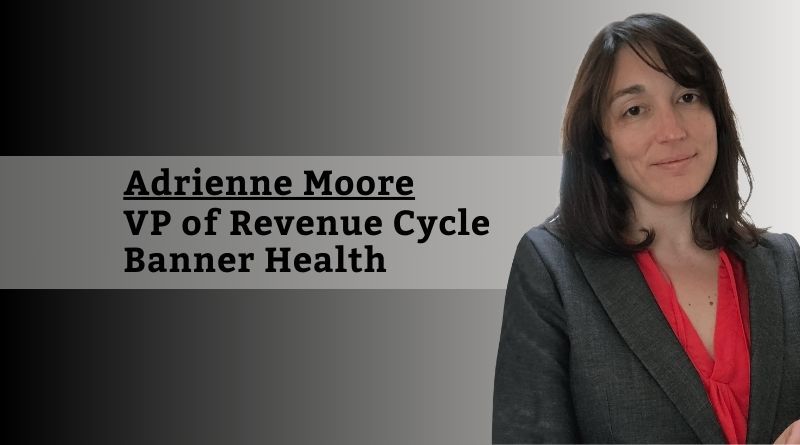The Role of Automation in Revenue Cycle Operations and its Transformative impact on the healthcare industry
By Adrienne Moore, VP of Revenue Cycle, Banner Health
I’m not sure whom to credit for the now universally accepted terminology to explain the technology adoption curve, but it does apply to automation. The innovators are the first out of the gate – they see a need, develop it, test it and bear a higher degree of risk than those who follow. Followed by early adopters who see the success that others have had and are willing to venture out onto that same limb. The risk is still high, but the gains established by those innovators before them make it worth the risk. The early and late majority are squarely in the middle and if we’re thinking about this statistically, they make up the majority of the bell curve in a normal distribution. Followed by laggards who adopt the innovation as late as possible and get on board when it’s already established as common practice.
Our organization has a fairly robust automation footprint. Let’s start with the workhouses of automation – bridge routines, edits and batches. Bridge routines can transform our data to accomplish things like changing/duplicating information, allowing us to split claims or follow payor-specific rules. Batches allow us to post large volumes of transactions simultaneously and gives an option to reverse. Edits let us create rules to route, modify or hold a claim. They help us implement thousands of rules for compliant governmental or payor-specific billing and coding.
The next wave in automation is robotic process automation (RPA), or bots for short. It can follow a set of directions and complete a prescribed action. Banner has around 40 bots running revenue cycle tasks at all times and continues to assess the value of these automations. Some are a bridge to tide us over while we wait for a permanent solution. For example, if you have an HL7 interface that’s failing and the programming solution is evasive, a quick fix is to have a bot key the information from one system into another while you work through the complexities of an interface redesign with systems that vendors have to update on their own timeframe. Can’t wait for the Q3 2024 release to get your interface working? Get a bot! Keep track of these quick fixes and ensure you sunset them. They are not long-term solutions, but when the pressure is off to find the permanent solution because you have a workaround, you might find the long-term solution pushing out over and over. Vendors are more likely to implement a solution in the next quarterly release that serves the needs of the majority of their client base, and your broken interface might be at the bottom of their list.
Everyone has experienced a bot doing something unexpected at some point.
Application Program Interfaces (APIs) are stepping in where bots have an Achilles heel. A bot can go out and get data from a specific location and make a point-to-point transfer of information. But what happens when you add a column in the middle of a dataset? Rename a field? If you don’t update the bot, it runs anyway and your information moved from point to point can quickly become very wrong. APIs allow you to just transfer the data. They’re a reliable form of information transfer.
Predictive analytics leveraging Machine Learning (ML) or predictive AI is driven by statistics. It will be very commonplace to use ML to drive workflow in the next two to three years. ML can take a set of data from your collections team and assess the actions taken, the outcomes and all the covariates or variables contributing to that outcome. A robust ML model can reduce the number of times we take an action that does not yield a result.
When we hear about bias in ML models, we often hear about it in clinical terms. It’s not just a social determinants of health style bias opportunity that exists in an ML model. It’s a data bias that can cause an ML based model to emulate an incorrect action that happens frequently – like accepting an underpayment that should be pursued. You should heavily audit and constantly retrain your models to attain accuracy. Don’t implement them universally. Look at each population as a separate implementation. Establish thresholds for model accuracy with your compliance partners, vendors and programmers.
While predictive AI uses rules and data as a reference and is constrained by those things, generative AI has no such constraints. It is somewhat constrained by the data it has been trained on, but can create new content from its base of information. The value of generative AI will be found where there is written content that can be created faster and possibly more accurately by the generative AI than by the human being responsible for the content. There are health systems testing generative AI in writing appeal letters. A recent JAMA’s article (Ayers, 2023) says that responses to patient questions written by AI chatbots were more empathetic than those written by physicians. We are likely to see generative AI in patient facing communications and provider documentation in the near future.
If your revenue cycle scope includes clinical documentation improvement (CDI) or clinical denial appeals, you may find a use case for generative AI in the near future. The regulations in this space will play a crucial role in determining its fortune.
Everyone has experienced a bot doing something unexpected at some point. The more complex the actions for a bot, the more opportunities for a break based on an unknown. Consider whether a bot should drive all the actions or serve as a component of an automation. Perhaps you could have one bot create a batch file and have another bot post a batch file rather than keying it directly into a system. That is certainly easier to reverse.
Payers are using automation today with far more success than providers. That puts providers in an interesting position because we need to rely on more automation to keep up with their automation. But, we also have a front-row seat to the scrutiny our judicial system is applying to the practice. AI governance is in its infancy and we don’t have enough formal guidance on what will be allowed. We cannot rest on our laurels while payers automate their workflows and bombard us with additional tasks to resolve before payment, so we have to automate. Health systems need to be mindful of how and where we follow them into the breach.
Transforming Healthcare Through Technology Insights



